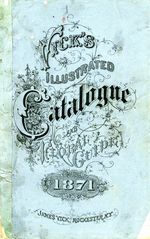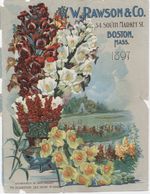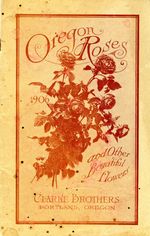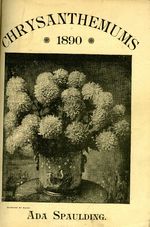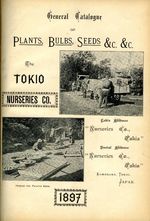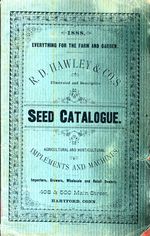
Illustrated and Descriptive Seed Catalogue. Agricultural and Horticultural Implements and Machines. 1888. (Click for more images)
“We do not resort to that questionable method, practiced by so many seedsmen of attaching our names to alleged improved varieties of vegetables in order to get fancy prices for them. A long name adds no value to the seed, and what you want is not long names but good seeds”
E. J. Bowen Seed Catalog, 1901
As American settlers became more permanently established, they planted more ornamental plants in addition to fruit trees and vegetable seeds.1 Catalogues of the late nineteenth century cater to the widespread passion for flowers, containing selections for gardeners of every taste. Those who wished to plant formal geometric bedding designs could find many dwarf varieties of brightly-hued annuals and tropical plants with colored foliage. Gardeners who preferred a nostalgic neo-colonial “grandmother’s garden” could choose from a vast selection of poppies, hollyhocks, and climbing vines. Catalogues such as that of James Vick in 1871 offered dried floral arrangements and supplies for flower arranging and exhibitions. Companies invited customers to view their demonstration gardens and trial grounds where they grew imported seeds or seeds from contract growers to ensure their good quality. The American edition of Krelage’s catalogue of November 1874-5 included a map for visitors to its nursery in Holland.
As railroad lines expanded, many people left crowded cities for new suburbs. Along with ornamental plantings, lawns were important for status-conscious suburbanites, especially after rotary push mowers came into widespread use during the 1870s.2 Grass seed was also in demand for tennis courts, croquet grounds, and parks. Illustrations in the R.D. Hawley & Co. catalogue of 1888 depict various ingenious lawn-care contraptions sold before the early twentieth century introduction of gas-powered lawn mowers, some examples of which are scanned. The tool section in W.W. Rawson’s catalogue, which supplied both amateur and market gardeners, shows some of the other tools and “garden sundries” from which gardeners could choose by the turn of the twentieth century.
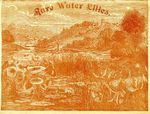
Catalogue of Rare Water Lilies and other Choice Aquatic Plants, with Directions for their Culture...etc. For sale by Edmund D. Sturtevant. 1885 (Click for more images)
American seed and nursery catalogues of the early twentieth century provide evidence of a settled and advanced horticulture, with many regional companies established throughout the country. As more people settled in California, many firms set up headquarters there, where the climate was ideal for growing seeds and selling plants over a longer season. The catalogue of Clarke Brothers Roses of Oregon pointed out that plants from western nurseries arrived faster and fresher to western gardens than those shipped from the East. Many more companies specialized in specific types of flowering plants such as roses, bulbs or water lilies. The Tokio Nurseries and Japanese Nursery catalogues catered to the prevailing interest in plants from the Asia. Examples of catalogue covers from the turn of the twentieth century in the OSU collection are scanned. For additional information on catalogues from this period, see Seed and Nursery Catalogue Art in the OSU Collection.

